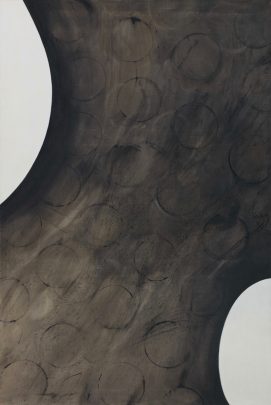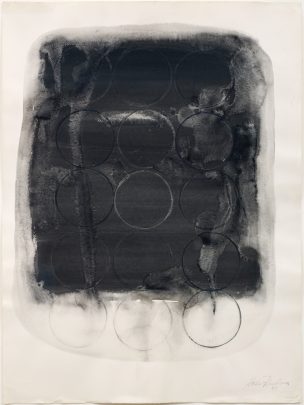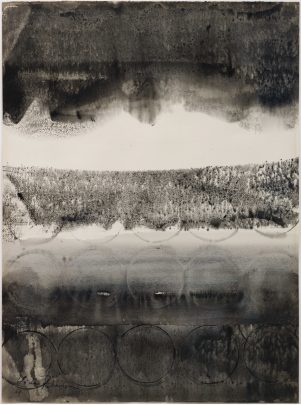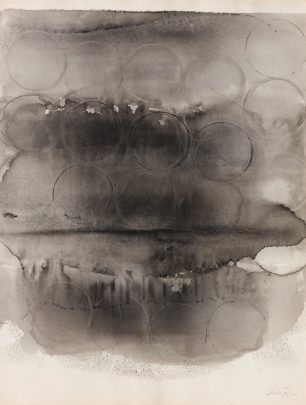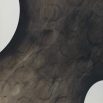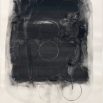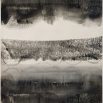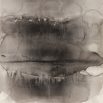福島秀子 FUKUSHIMA Hideko 1927–1997
- Work 10 1963年 油彩・キャンバス 145.5x97cm 国立国際美術館蔵
Work 10 1963 oil on canvas 145.5x97cm Collection of The National Museeum of Art, Osaka
展覧会歴:1963年「福島秀子展」南画廊、東京
Exhibiiton: 1963 ‘Hideko Fukushima’ Minami Gallery, Tokyo - 無題 1963年 インク・紙 76x56cm 販売済み
untitled 1963 Ink on paper 76x56cm sold - 無題 1967年 インク・紙 旧ミシェル・タピエコレクション 76x56cm
untitled 1967 Ink on paper former collection of Michel Tapié 76x56cm - 無題 1960年代 インク・紙 76x57cm
untitled 1960's Ink on paper 76x57cm
東京都の出身、文化学院卒業後の昭和26(1951)年、秋山邦晴、北代省三、山口勝弘、鈴木博義、武満徹、福島和夫とともに、美術と音楽の領域を越えて、新たな芸術表現をめざす前衛集団「実験工房」を結成、これに参加した。この年の11月に開かれた第1回発表会では、前衛バレエ「生きる悦び」を上演、この美術を山口、北代とともに担当した。毎回の発表会では、それぞれがワークショップ的に参加、文字どおり実験的な表現を試み、総合的な芸術がめざされた。29年には、実験工房「シェーンベルグ作品演奏会」が開かれ、「月に憑かれたピエロ」など、全曲日本での初演となった。福島は、その舞台衣裳を担当した。また、戦後から抽象表現を試みていた福島は、画家としても、絵筆をつかわず、円形の型を推して画面を構成する抽象絵画を制作して、注目されていた。1997年逝去。
(「福島秀子」『日本美術年鑑』平成10年版(397頁) より引用)
Hideko Fukushima ( 福島秀子, Fukushima Hideko; 1927 – July 2, 1997), born Aiko Fukushima, was a Japanese avant-garde painter born in the Nogizaka neighborhood of Tokyo. She was known as both a founding member of the Tokyo-based postwar avant-garde artist collective Jikken Kōbō and as a talented painter infamously recruited into Art Informel circles by the critic Michel Tapié during his 1957 trip to Japan. As a member of Jikken Kōbō she not only participated in art exhibitions, but also designed visuals for slide shows and costumes and set pieces for dances, theatrical performances, and recitals. She contributed to the postwar push that challenged both the boundaries between media and the nature of artistic collaboration, culminating in the intermedia experiments of Expo '70.
Fukushima was well-recognized as an avant-garde painter in the 1950s and early 1960s despite never having received formal training. With the support of such figures as Nobuya Abe and Shūzō Takiguchi, she experimented with abstract, cubist, constructivist, and surrealist forms, charting a trajectory from experiments with figurative and facial forms to produce process-based paintings featuring the technique of “stamping” (捺す). It was her works featuring pressed circles and lines that caught the eye of Michel Tapié, and which were featured in various European exhibitions in the late 1950s and early 1960s. Now her work is held in the collections of the Tate Museum, the Museum of Contemporary Art Tokyo, and the Museum of Modern Art, Tokyo, among others.
< from Wikipedia>
